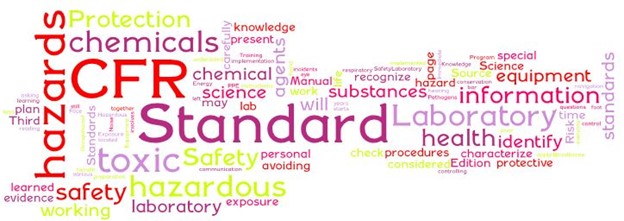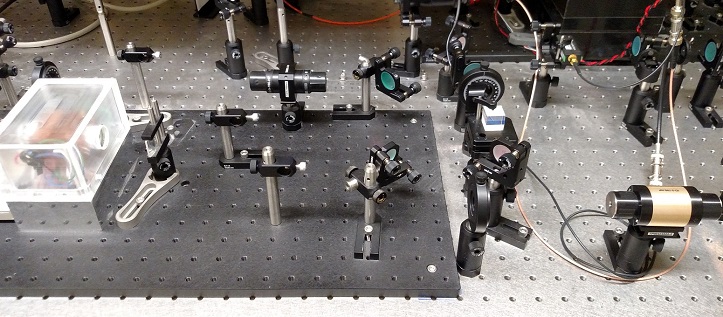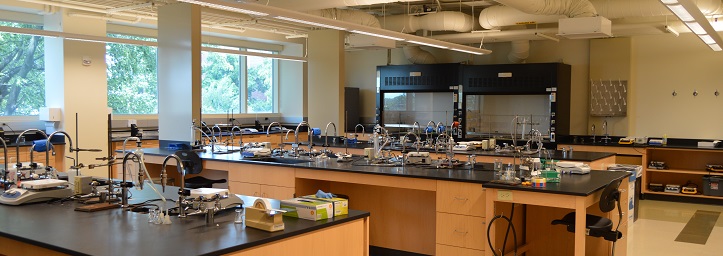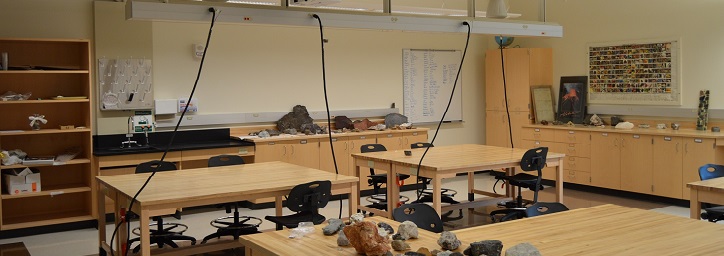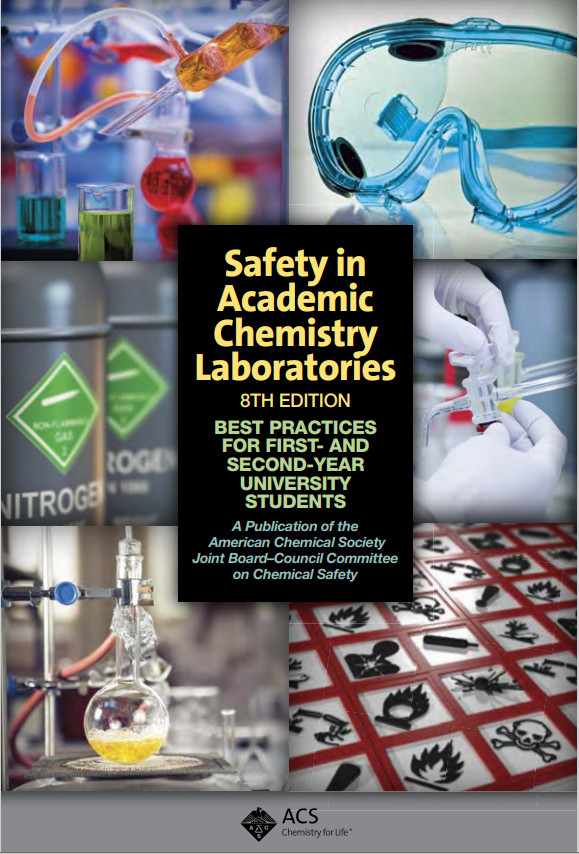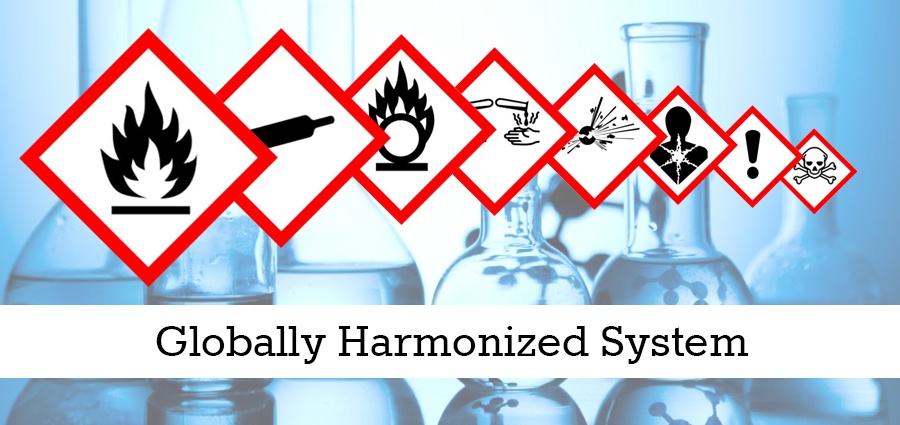
Laboratory Safety
Laboratory safety involves everyone in the laboratory working together to recognize, identify and characterize hazards. Learning how to recognize and identify hazards starts with reading lab procedures carefully and asking questions about information or instructions you don't understand.
Incident prevention is a collective responsibility, which requires the full cooperation of everyone in the laboratory. Although everyone is responsible for safety in the laboratory, you, the experimenter, can most directly prevent incidents.
Check out the left navigation bar for hazard information on various safety topics.
Select on the image (below) to learn more about how to work safely in an Academic Chemistry Laboratory, and the RAMP principle. RAMP Up for Safety, Recongize hazards, Assess the risks of hazards, Minimize the risks of hazards, Prepare for emergencies; or scroll down to select on a specific chapter link.St. Norbert follows the best practices provided in the American Chemical Society (ACS) publication, Safety in Academic Chemistry Laboratories 8th edition.
"Events, Incidents, and Accidents - Unexpected and unwanted events sometimes occur in laboratories. In this booklet, the term "incident" is used instead of "accident" so as not to imply that these events occur randomly or inevitably. Virtually all incidents are preventable if the guidelines and safety principles presented in this booklet are followed." Note from page 14 sidebar.
Click on picture to read the 76 page booklet, or select on the chapter links below.
Table of Contents
Chapter 1 - Being Safe in the Laboratory .............................10-13
Chapter 2 - Your Responsibility for Safety in Laboratories ......14-25
Chapter 3 - Guide to Chemical Hazards................................26-45
Chapter 4 - Recommended Laboratory Techniques.................46-57
Chapter 5 - Safety Equipment and Emergency Response........58-69
Safety Awareness Training PowerPoint Slideshow with audio [22:30]
Immediate benefit...
"Knowledge and preparation are the keys to avoiding incidents and controlling the hazards present in the Laboratory."
Source: Science Laboratory Safety Manual-Third Edition page 6
Training on various safety topics before performing experiments or operating equipment for the first time will also reduce risks and help you identify and characterize hazards. Please take time to become aware of the safety information on this webpage.
In the future...
After you complete your formal education and find yourself entering society as part of the professional and labor forces, you will reap the benefits of the knowledge and habits learned in school science programs. Whether you are involved directly in medical or science professions or with the manufacture, utilization or handling of hazardous materials, what is learned today will be invaluable tomorrow."
"Earning power, productivity, quality of life and possibly even length of life - may well depend upon the knowledge and skills required to ensure job safety and respond properly to the wide range of health hazards to which a person is exposed."
Source: Science Laboratory Safety Manual-Third Edition page 61
Chemical Hygiene Plan
The purpose of a chemical hygiene plan is to set forth standards, procedures, equipment, personal protective equipment and carefully planned work practices for the laboratory use of chemicals in order to protect laboratory workers from the potential health hazards of the chemicals they encounter in the lab. The standards apply to all individuals working with hazardous chemicals in science and biology laboratories. View the Chemical Hygiene Plan.
Risk is a combination of the likelihood of an unwanted incident occurring, the severity of the consequences if it occurs, and the frequency of the exposure to the hazard.
Avoiding Underestimation of Risk
A hazardous chemical is one in which there is statistically significant evidence that acute or chronic health effects may occur due to exposure.
Health-hazardous chemicals include those which are carcinogens, toxic or highly toxic agents, reproductive toxins, irritants, corrosives, sensitizers, hepatoxins (liver), nephrotoxins (kidneys), neurotoxins (nervus system), hematopoietic (blood) system agents and agents which damage the lungs, skin, eyes or mucous membranes.
Physically-hazardous chemicals refer to those in which there is scientifically valid evidence that it is a combustible or flammable liquid, a compressed gas, an organic peroxide, an oxidizer, pyrophoric, unstable or explosive, or water-reactive.
Exposures for all substances (skin contact, ingestion, inhalation) should be minimized; during work with substances which present special hazards, special precautions should be taken. Any toxic mixture should be considered more toxic than its most toxic component. Substances of unknown toxicity should be considered toxic.
Always read the label, and check the Safety Data Sheet (SDS) information before working with a chemical.
Other Standards that were implemented over the years prior to the implementation of the Laboratory Safety Standard. These Standards still apply:
Bloodborne Pathogens Standard (29 CFR 1910.1030;
Control of Hazardous Energy Standard (29 CFR 1910.147);
Eye and Face Protection Standard (29 CFR 1910.133);
Foot Protection Standard (29 CFR 1910.136);
Hand Protection Standard (29 CFR 1910.138);
Hazard Communication Standard (29 CFR 1910.1200);
Hearing Conservation Program - Occupational Noise Exposure (29 CFR 1910.95);
Personal Protective Equipment (PPE) Standard (29 CFR 1910.132);
Respiratory Protection Standard (29 CFR 1910.134;
Contact Info
Mark Musser, Chemical Hygiene Officer (CHO)920-403-4019
mark.musser@snc.edu





